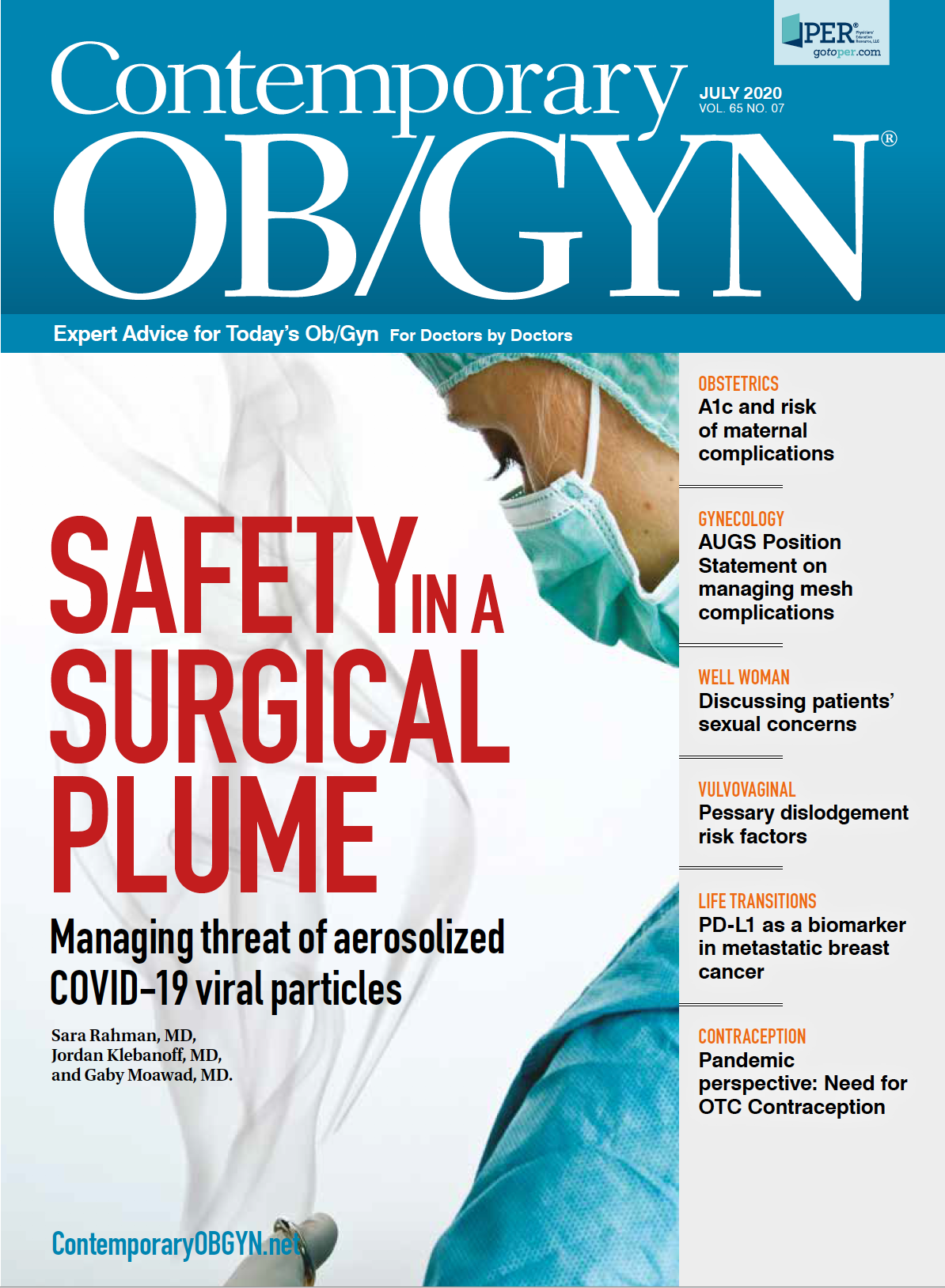AUGS Consensus Statement: Managing mesh problems
The American Urogynecologic Society (AUGS) released new information on managing mesh problems, which includes guidance, treatment algorithms and ways to optimize treatment outcomes for these complications.
The scientific approach to categorizing mesh complications, as well as optimal methods to address them, have been complicated by the rapid proliferation and evolution of materials and techniques that have been used over the past 20 years in surgical treatment of pelvic floor disorders.
In addition, terminology used to diagnose and categorize mesh complications, as well as the descriptions of surgical procedures to manage them, have been adopted inconsistently, further hampering development of a collective experience with a standardized lexicon.
Finally, much of the high-quality data on management of mesh complications is based on materials that are rarely used or not commercially available today.
Women experiencing mesh complications need to be heard, and should have access to resources and providers who are most able to help. Many women require multiple procedures to address their mesh complications, and for some of these patients, relief is incomplete.
We should strive to optimize the treatment at the initial diagnosis of a mesh-related complication.
This Position Statement has 4 goals:
1: Using the best and most relevant evidence available, provide guidance for the FPMRS subspecialist caring for patients who may be experiencing mesh complications.
2: Provide an algorithm outlining treatment choices for patients with mesh-related complications that can be used as a platform for shared decision-making in the treatment of these complications.
3: Identify and prioritize gaps in evidence concerning specific mesh complications and their treatments.
4: Identify provider and health facility characteristics that may optimize the outcomes of treatments for these complications
The treatment algorithm requires consistent and accurate terminology for treatment procedures, as follows:
- Mesh Revision: either no mesh is removed (e.g., dissecting and primarily closing vaginal epithelium), or a small edge of mesh is removed such that the structural integrity of the implant is left intact.
- Partial Vaginal Mesh Excision: a segment/component of the mesh is removed or transected, such that the structural integrity of the implant is altered.
- Complete Vaginal Mesh Excision: the entirety of the mesh that is in contact with the vagina is excised.
- Extra-vaginal Mesh Excision: removal of segments or components of mesh beyond, or not in contact with, the vagina
- Total Mesh Excision: the surgical goal is the removal of 100% of the implant; extirpation.
The treatment algorithm is presented, along with the level of evidence supporting each decision node. Recognizing that some patients will require more than one procedure, the recommendation is made that treatments are not repeated; if a given treatment is unsuccessful, consideration should be given to advancing to the next item on the algorithm.
Full text of “Management of Mesh-Related Complications for the FPMRS Specialist” can be found here.
__
This was created in partnership with the American Urogynecologic Society (AUGS). AUGS was established in 1979 and represents more than 1,900 members, including practicing physicians, nurse practitioners, physical therapists, nurses and health care professionals, and researchers from many disciplines.


